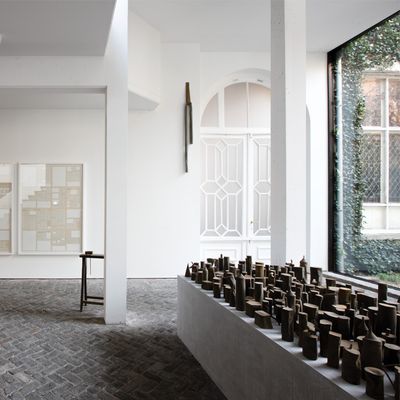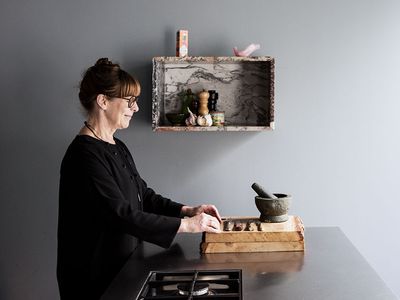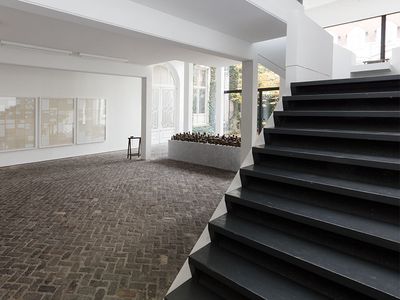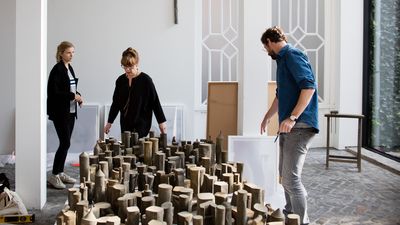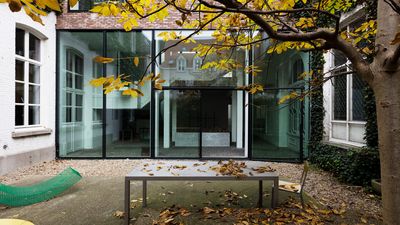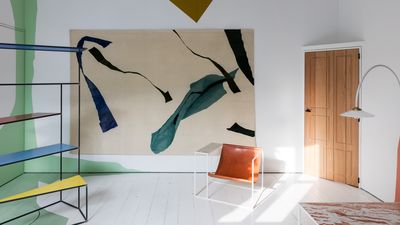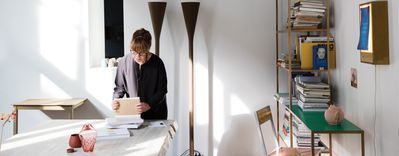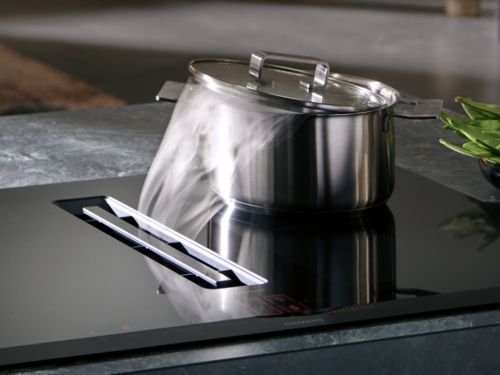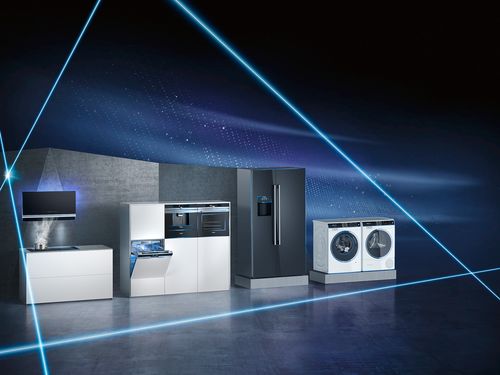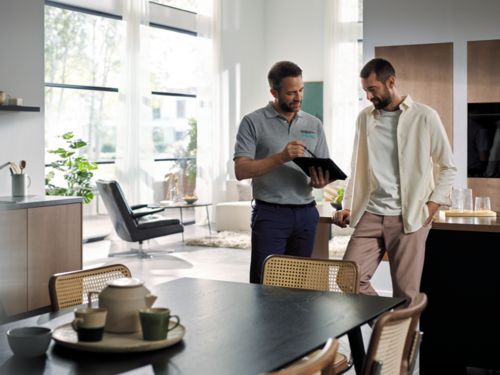Veerle Wenes – Gallerist, Antwerp (Belgium)
Browsing online in 2009, Veerle stumbled upon a near derelict property at the heart of Antwerp’s historic center. Where most would have seen impossibility – the two buildings were in disrepair and vastly different architecturally – Veerle saw the potential for a new way of living. With the assistance of her husband Bob Christiaens, and architect Bart Lens, she determined to combine the buildings to create a home where her work and home life would blend. Today, the concrete modernism of the gallery and the traditional European architecture of her home exist in aesthetic unison, tied together by a concrete herringbone floor and ceiling-high windows that open the spaces to one another.
That Veerle trained as an architect seems unsurprising. Who else would have imagined the spectacular light filled atrium that connects the brutalist concrete art gallery to her home, a 19th century former atelier? Just as there is little distinction between the two buildings, lines continue to blur in the gallery space. Renowned for her reimagining of artistic disciplines and her recreation of objects, Veerle’s home feels like a contemporary salon – a space where both business and pleasure are conducted around the kitchen table.
You are trained as an architect in Cannes, how did you end up a gallerist in Antwerp?
Architecture is one of the most important art forms, but for me it was too slow creatively. I like things that go quickly! That’s why I moved into graphic design and communication, because we had to be creative very fast. Wehad to take what was going on and translate it into concepts. For me the concepts were more important than any advertisements we made.
You had a design and communication firm for 20 years, how did you transition from advertising to art?
I’m somebody who quickly follows my intuition, so when I was asked to do an exhibition—it was heaven. I had come from nowhere, but was dealing with the directors of the Art and Design Museums. They had never opened together before and they never have again. We had 40 artists and designers work across the two museums, a fabulous combination of disciplines!
This crossing of disciplines has become something of a trademark for you and your gallery. Do you think this exhibition a bit of a catalyst for your curatorial career move?
At that moment, I thought if I had a career change, it would be to work in an independent way with creative people. When you’re in communication your creativity is used to sell the products of the person who pays you. That’s how our society works. After twenty years, I was interested in doing something that wasn’t dependent on someone else. Something that wasn’t dependent on clients or money.
And that something was a gallery?
From the beginning, I didn’t want Valerie Traan to be just an ‘art gallery,’ because I think there are enough good galleries and I didn’t want to be the 13th ‘maybe-good’ art gallery. In my profession design and architecture are very important, but art is very important as well. So I decided on a gallery with a subtitle, ‘Subjects and Objects.’ For me, objects should tell a story, otherwise there is no need to show them.
How do you decide who and what you show in the gallery?
I have always gone for things when I felt they were right. Each exhibition for me is as important as the next. When I start an exhibition or a collaboration with a designer, an architect or an artist, it is always because it feels like a good match.
So a good match to you is a marker of success?
Success is a very relative thing. Success is what you feel after an exhibition. You can sell nothing from a show, but you can feel it is a successful collaboration of people, a successful meeting, a successful feeling, a successful story. Because I am a certain age, the reasons for my gallery are different than they would be for someone who is thirty years old.
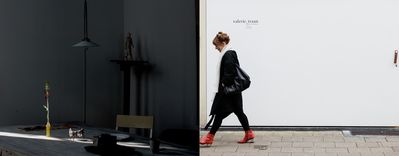
Success is a very relative thing. Success is what you feel after an exhibition.
Given your living and working situation, would you say that you live a particularly public life?
I am somebody who is very conscious about privacy. But when the gallery is open, people can come in and they can see everything! So maybe that is why when we found this space I decided to start, and not any earlier. Because I wanted the right space as well.
Why did you choose Antwerp as the location for the gallery, and not Ghent where you were formerly based?
My husband is based in Antwerp. And, I don’t know if you know, but an Antwerp man, you don’t move him! I sometimes think the gallery would be better in Brussels or in Paris, but then you have other problems. When you are based in Paris, the costs are huge. When you’re based in Brussels, you cannot live in the space. So I think Antwerp was a pragmatic decision that I made because of love.
Love is nice reason to end up anywhere! Could you explain a little about the history of the buildings to us?
The gallery space was a huge furniture showroom and this space here was an atelier for nuns. They made bras here. Imagine that, nuns making bras! It was a workspace, but we renovated it and made it a home. The gallery space was built in 1979, and is in contrast a classic example of concrete modernism.
The really feel connected now, obviously you undertook some radical renovations before moving in?
We collaborated with our friend, architect Bart Lens, to join the two buildings in a way that was sympathetic and modern. From the moment we saw the space it was really clear, we wanted to live in the house at the back, and have the gallery at the front.
What is the most important space in your home?
This space, the kitchen, I am always here. It’s my office, we eat here—with family, with friends. This is the most important space.
So the kitchen table, in its various incarnations, is the heart of your home?
Yes. We are always here, around this table. Good food is very important. I think the people who work in gastronomy, not the high-end gastronomy but the in the production of food in suburban environments, are really critical. What they’re making is not just a new trend, or a product, it’s the future. That’s why the table is one of the most important pieces in the house, because it’s part of this future.
Your career has crossed a number of creative pursuits, do you think gallerist is your last stop?
Sometimes I think maybe I should do something else. But when you start something that rolls, you should roll with it. Maybe there is a better expression in English! You can’t say stop, otherwise you stop. Sometimes it is too much—when you’re successful there is more work. But that work is what your started it all for!

